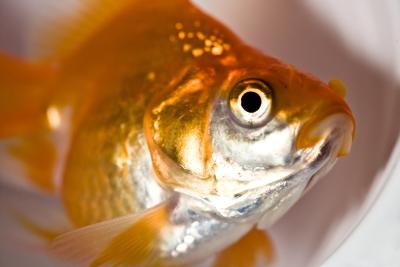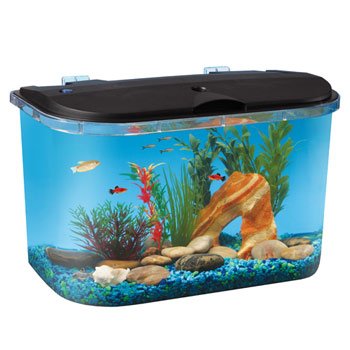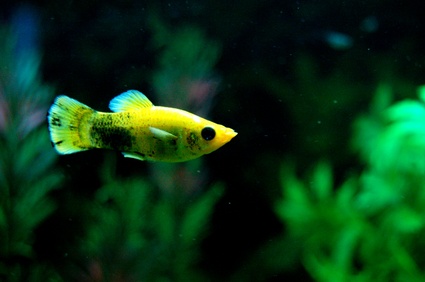In September 2008, the world was shocked at the sight of little babies in China attached to dialysis machines as they fight for their lives. Yet, the news of contaminated milk formula did not gain much attention until it was realized that the melamine problem is not only restricted to China only but has actually spread globally. However, no ill effects of melamine has been reported outside China and its territories.
Melamine is an organic compound with the official IUPAC name of 1,3,5-triazine-2,4,6-triamine and the chemical formula of C3H6N6. It is a solid white-colored base, and is odorless. It is slightly soluble in water, stable, and not easily biodegradable.
Melamine is an industrial ingredient used to manufacture different kinds of products. It is used in combination with formaldehyde in the production of plastics and cleaning products. It is also combined with other compounds in the manufacture of fire retardants, pesticides, fertilizers, extra-strong concrete. Many things in our home have been manufactured with the use of melamine, from Formica counter tops, to certain fabrics, to plastic kitchenware (melaware).
Melamine has been thought to be of low risk to humans. According to this Material Safety Data Sheet (MSDS), melamine is "Harmful if swallowed, inhaled or absorbed through the skin. Chronic exposure may cause cancer or reproductive damage. Eye, skin and respiratory irritant." The toxicity of melamine, however, is low. To be "poisoned" by melamine, as determined by the so-called LD50, which is the lethal dose that will kill 50% of animals tested, is 3 g per kg of body weight (source: WHO).
According to studies cited in the Hazardous Substances Data Bank (HSDB), "melamine itself does not seem to be important industrial hazard except if decomposed by heat." Allergic and irritative dermatitis have been observed to result from occupational exposure to melamine but no permanent injury due to toxicity has been reported.
Like most industrial chemicals, toxicological tests on melamine have been performed using animals to determine its potential toxicity to humans which include the formation of calcareous deposits in the kidneys of female rats after 13 weeks of feeding melamine-containing food (WHO) and tumors in the urinary bladders of male rats fed diets with melamine for 103 weeks (IARC). According to this later study, melamine and cyanuric acid together caused renal toxicity in cats, pigs, and fish. The study concluded that "although melamine and cyanuric acid appeared to have low toxicity when administered separately, they induced extensive renal crystal formation when administered together.
However, there are significant gaps in our knowledge of melamine and its effect on our body. The safety/risk assessment conducted by the US FDA did not give any clear answers. In food products other than infant formula, the FDA concludes levels of melamine and melamine-related compounds below 2.5 parts per million (ppm) do not raise health concerns."
In the current melamine contamination scandal, however, it is not acute toxicity that caused the health problems. What is making the babies ill is chronic or subchronic toxicity. In addition, the toxicity of melamine increases when combined with another compound called cyanuric acid. Cyanuric acid theoretically non-toxic is present in food additives for animal feeds and in water disinfectants. Human exposure to cyanotic acid may be through swimming pool waters, drinking water, and fish. The combination of these two compounds can lead to acute toxicity, as it produces melamine cyanurate, a toxic substance in the form of insoluble crystals that then accumulated in vital organs, especially the kidneys, forming renal crystals or kidney stones that block kidney tubules.
It is speculated that manufacturers mixed melamine in milk formulas to increase the protein content of their products. Food products are tested for protein content by measuring nitrogen content. Looking at the chemical composition of melamine, we can see that it has high nitrogen content.
This not the first time that melamine was used deliberately as protein content enhancer although this is the most deadly so far. In 2007, many cats and dogs died of kidney failure as a result of the formation of renal crystals or kidney stones. The cause of the renal toxicity was traced to melamine which was detected in pet food. Melamine-cyanuric acid cocrystals were found in the animals' kidneys and the case was well-publicized. It is therefore highly unlikely that the perpetrators who tainted the baby formulas are unaware of the hazards of melamine consumption.
But this year's melamine scandal was more shocking than last year's because it affected and killed little babies. The following is a summary of events.
September 2008 - Fourteen babies in the Chinese province of Gansu were reported to be suffering from kidney stones, a very rare occurrence in young children. The suspected cause was the milk formula they were drinking. More and more cases of ill babies were reported all over China. The milk powder in question was manufactured by the Sanlu Group.
The US Food and Drug Administration (US FDA) issued a health information advisory on infant formulas. The advisory "is to assure the American public that there is no known threat of contamination in infant formula manufactured by companies that have met the requirements to sell infant formula in the United States... The following manufacturers have met the necessary FDA requirements for marketing milk-based infant formulas in the United States: Abbott Nutritionals, Mead Johnson Nutritionals, Nestle USA, PBM Nutritionals, and Solus Products LLC."
The director of the Chinese agency General Administration of Quality Supervision, Inspection and Quarantine resigned as investigations showed that the melamine contamination is quite widespread. Tests showed that milk products of up to 22 dairy producers were contaminated with melamine.
The US FDA updated the advisory to issue a list of contaminated products manufactured in Taiwan, including Mr. Brown instant coffee and milk tea products.
The New Zealand Food safety Authority found melamine in China's most popular sweet White Rabbit Creamy Candies.
The UK chocolate maker Cadbury recalled its Chinese-made products after chocolates from their Beijing factory tested positive for melamine, according to this International Herald Tribune report.
October 2008 - The problem spread to Europe. Chinese candies contaminated with melamine were found in an Asian supermarket in Germany. There were also reports of contaminated food products in Belgium and the Netherlands. The US FDA detected melamine in Blue Cat Flavor Drinks.
The Canadian Food Inspection Agency (CFIA) issued a warning against the consumption of Sherwood Brands Pirate's Gold Milk Chocolate Coins which tested positive for melamine. It was not clear how the contamination occurred.
The numbers of ill babies rose up to tens of thousands. Eighty percent of those affected were below the age of 2. Four cases proved to be fatal. China also recalled not only powdered milk but also liquid milk manufactured during the last couple of months.
Hong Kong found excessive amounts of melamine in eggs coming from mainland China. Officials suspected that the contamination came through melamine in the chicken feeds. They have ordered testing of all animal feeds and poultry products from the mainland. "Hong Kong has imposed a limit on melamine use in foods, restricting it to no more than 2.5 milligrams per kilogramme. Melamine found in food meant for children under three and lactating mothers should be no higher than one mg per kg", according to the BBC.
November 2008 - The US FDA issued a nationwide alert warning for Chinese import food products and found traces of melamine in one baby formula made by an American manufacturer. The regulatory body claimed the contamination was accidental but did not go into details.
December 2008 - Food Standards Australia New Zealand issued a list of products contaminated with melamine.
The US FDA tried to assure the American public that American-produced formulas are safe from contamination. "To date, FDA tests have found extremely low levels of melamine in one infant formula sample and extremely low levels of cyanuric acid in another. The levels were so low (well below 1 ppm) that they do not pose a health risk to infants." The FDA made public the test results on domestic infant formula. Good Start Supreme Infant Formula with Iron from Nestle contained very low amounts of melamine. In addition, cyanotic acid was found in one type of Enfamil from the manufacturer Mead Johnson.
On the part of the Chinese health authorities, they are trying to repair the damage through recalls and arrests of those responsible. Developing countries, however, which do not have the means to test import products, are at risk of becoming dumping grounds of contaminated products.
The best strategy is to simply avoid melamine at all costs. Consumers are advised to be vigilant about what they buy and consume, most especially products consumed by children in large quantities. These include milk and milk products, chocolates, sweets, and biscuits.

 How to Painlessly Kill a Fish
How to Painlessly Kill a Fish
How to P
How to Painlessly Kill a Fish
How to Painlessly Kill a Fish
How to P
 Aquarium Setup
Buying an aquarium is a lot
Aquarium Setup
Buying an aquarium is a lot
 Tips for Maintaining a Freshwater Aquarium
Here are a few tips for main
Tips for Maintaining a Freshwater Aquarium
Here are a few tips for main
 What Fish Can Live in Brackish Water
What Fish Can Live in Brackish Water
W
What Fish Can Live in Brackish Water
What Fish Can Live in Brackish Water
W
 Types of Fish for Freshwater Aquariums
Types of Fish for Freshwater Aquariums
Types of Fish for Freshwater Aquariums
Types of Fish for Freshwater Aquariums